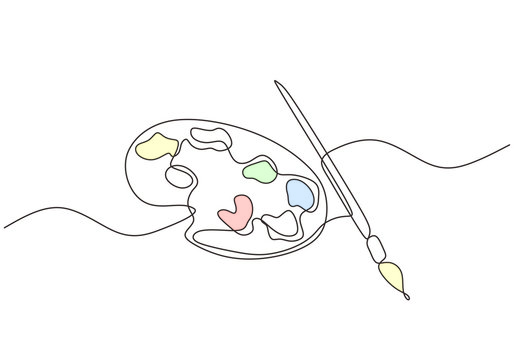Eight Principles That Make


Rethinking Modern School Structures and Systems
Sundial Classical Farmstead’s founder, Sarah Kwilinski, used her 20+ years as a
special education teacher and consultant to identify structural and systemic barriers
to learning found in modern educational practices.
Sundial’s Structural or Pedagogical Difference
A Modern Education Practice
1
Charlotte Mason Philosophy
Sundial’s Structural or Pedagogical Difference
The one-room schoolhouse model enables mastery-based (not age-based)
progression. The study of beautiful things--music, art, nature, literature--teaches
students to attend. The teacher’s role is to shepherd each student through individualized
challenges.
-Sonya Shafer at Simply Charlotte Mason
A Modern Education Practice
One Size Fits All - Large, single-age cohorts progress at the same rate through the
same content. Ubiquitous instructional methods used from ages 5 to 18. Credits are based
on seat-time, not mastery.
2
Small Group Instruction
Sundial’s Structural or Pedagogical Difference
Academic instruction is only delivered via small-group, direct instruction. Ability-based
groupings of 3 to 5 students stimulates active engagement and enables immediate error
correction.
-The 2 Sigma Problem: The Search for Methods of Group Instruction as Effective as
One-to-One Tutoring, Benjamin S. Bloom. Educational Researcher, Vol 13, No 6. 1984.
A Modern Education Practice
Large groups require classroom management and pedagogical practices that force teachers
into the active speaking and presenting role, and students into the passive listening,
writing, and reproducing role.
3
Honor Developmental Capacity
Sundial’s Structural or Pedagogical Difference
A child’s brain cannot be forced into early maturity. Rigorous studies of Head Start and other PreK
intervention programs show both no lasting academic gains AND a strong correlation between attending
an intervention-style PreK program and poorer outcomes in the upper grades: higher rates of suspension,
truancy, and referrals for special education, etc.
-Evaluating the Effectiveness of Tennessee’s Voluntary Pre-K Program 2009-present.
my.vanderbilt.edu/tnprekevaluation
A Modern Education Practice
Early childhood intervention: the “training wheels” approach creates the “bulldozed”
child in the long run. Expectations are too rigorous during the early elementary years,
and then too low during high school.
4
Durable Hospitality
Sundial’s Structural or Pedagogical Difference
Sundial practices a Culture of Hospitality: first build a durable table (a firm
foundation of beliefs) and then invite everyone to your table. This enables a robust
Culture of Inquiry: seeking to understand.
-Alasdair MacIntyre’s works on virtue-based ethics
A Modern Education Practice
Reacting to extremism and intolerance by teaching deconstructionism and relativism has
led to higher rates of anxiety and depression among schoolchildren. Students are given
too many choices without a strong moral compass. They are exhausted.
5
Student Formation
Sundial’s Structural or Pedagogical Difference
A balanced schedule of arts, academics, and practical skills requires a child to more
fully perfect his ability to resist vice in all settings. We teach: Intellectual
Formation to overcome ignorance. Moral Formation to acquire rightly ordered loves.
Aesthetic Formation to develop talent and taste. Spiritual Formation to overcome
acedia. Physical Formation to develop discipline. Practical Formation to overcome
helplessness. Social Formation to develop civic virtue.
-Brian Williams, Introducing Principia and Classical Education, Principia: A Journal
of Classical Education, Vol 1, Issue 1. 2022.
A Modern Education Practice
A narrow focus on only two avenues for success–academics or sports--does not prepare
students for a rich, fully faceted life.
6
No Tech Classrooms
Sundial’s Structural or Pedagogical Difference
Our teachers model schole - purposeful, leisurely learning of worthwhile content. Personal
devices and internet-infused teaching inhibit the development of the highly focused,
deeply contemplative attitude we cultivate.
-Technology and the Character of the Contemporary Life: A Philosophical Inquiry by
Albert Borgmann. 1984.
A Modern Education Practice
Utilitarian ethics permeate modern school culture from the building architecture to the
pervasive reliance on technological devices.
7
Authentic Assessment
Sundial’s Structural or Pedagogical Difference
Sundial does not assign letter grades or homework. The onus for demonstrating mastery is
on the student. We believe the work of preparing for an oral recitation, project, or
performance is, in itself, of deep value to our students.
“Work is a good thing for man”
-Laborem Exercens by Pope St. John Paul II
-Laborem Exercens by Pope St. John Paul II
A Modern Education Practice
Homework and letter grades are performative rituals that create work for the teacher
and only serve the parent. The student is the least active participant in this exchange.
8
Non-Competitive Mindset
Sundial’s Structural or Pedagogical Difference
Our focus on deep mastery and individualized instructional methods means that despite
having a 130 day academic calendar (50 days shorter than traditional school calendars)
our students - including those with learning disabilities - perform at or above grade
level on standardized testing.
-Joshua Gibbs, Stop Assigning Reading Homework, The Cedar Room, Circe Institute, 2016.
A Modern Education Practice
Competition between schools on students’ standardized test scores creates a frenetic
pace to cover all potential test questions. This then leads to shallow coverage of the
curricula.

Modern practices induce passivity.
Sundial's methods inspire ownership.
Sundial's methods inspire ownership.



